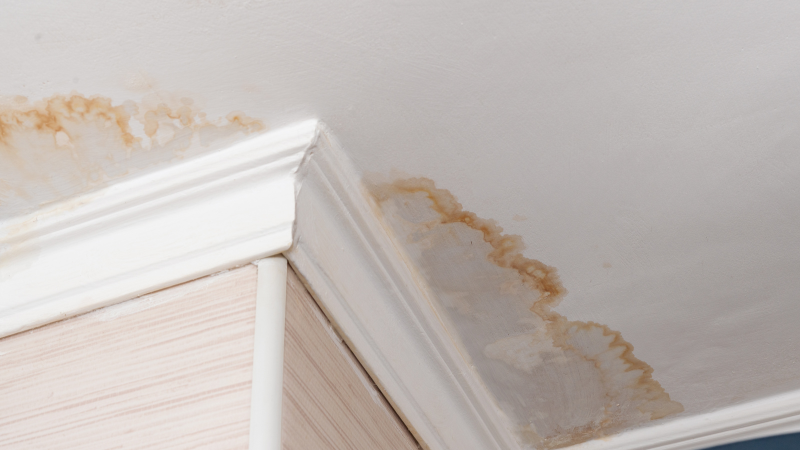Searching for Indications of Water Damage in the Bathroom
Searching for Indications of Water Damage in the Bathroom
Blog Article
Are you trying to find tips on Common Causes of Water Damage in a Bathroom?

The bathroom is incredibly at risk for damp accumulation and also prospective water damages because of the frequent use of water in it. This article offers straightforward inspection methods to help detecting water damage hazards.
The constant use water in the restroom makes it extremely at risk for wet accumulation and also prospective water damage. By evaluating it frequently, you can reduce water associated problems.
The following set of examinations is easy to execute and must be done once in every three months in order to maintain your washroom in good shape and to stop potential water damages brought on by the bathtub, the shower, pipe joints and also plumbing, sinks, cabinets, as well as the commode
Do not neglect doing these inspections as well as be detailed while performing them. Bear in mind that these straightforward examinations can save you a lot of money by providing early indications for water damages
Bathtub and Shower
The shower and tub need unique attention as well as maintenance. Check the ceramic tiles and replace if fractured. See to it that there is no missing grout in between the tiles. Examine and also replace broken caulking at joints where the wall surfaces meet the flooring or the bathtub. Blocked drains pipes and pipelines troubles will certainly avoid the tub from drying out and may show serious problems below the tub. Seek advice from an expert quickly to prevent structural damages. Pay attention to discolorations or soft locations around the bath tub wall surfaces as they may indicate an inner leak.
Plumbing
Signs for water damages are tough to discover considering that a lot of pipes are mounted inside the walls.
Pay special attention to floor covering and also wall surfaces wetness as well as spots as they might suggest an invisible plumbing trouble. Check wetness levels in adjoining rooms also.
Sinks as well as Cabinets
Sinks and cupboards are exposed to dampness and moisture day-to-day and are frequently forgotten. Evaluate routinely under the sink and on the kitchen counter over it. Fix any kind of drip in the catch as it might suggest drain problems. Take a look around the sink, slow draining pipes may indicate a blocked drain. Replace sink seals if they are cracked or loosened.
The Commode
The commode is a vulnerable water junction. Check the water lines and search for leaks around the toilet seat, in the tube, and also under the water storage tank. If you discover any indications of wetness on the flooring around the toilet, look for leaks in the toilet rim and container seals.
Realize that hanging commode dish antiperspirants increases the chances for clogs.
How to Prevent Water Damage in Your Bathroom?
Water damage repair is an expensive, meticulous, and lengthy process. Unfortunately, bathrooms are the most susceptible rooms to water damage due to toilets, showers, and sinks. Pipes and fixtures wear out over time and are not immune to damage. But all is not lost, as there are ways to prevent water damage from occurring in your bathroom.
Check Your Plumbing
Nothing lasts forever, especially pipes, which can rust and begin leaking over time. You should periodically conduct pipe inspections and pay attention for any musty smells or water stains that may indicate you need water damage repair. Here are some things to check:
Frequently test valves for your toilet, shower, and sink to ensure they are properly working. Check faucet supply lines hidden under vanities and replace when needed. Replace cracked or deteriorating caulking along sinks, tubs, and showers. If you notice a clog in your sink, call in a professional. Since you can’t check the pipes in the wall, keep an eye out for stains, drywall bubbling, musty smells, and excess moisture; if the bathroom is on a second level, check the ceiling of the room directly below for these signs. Don’t Overwork Your Toilet
One of the most common reasons bathrooms need water damage repair is due to overflowing toilets. Save yourself the hassle of cleanup by being mindful and not pushing your toilet to extreme limits. If you have young children, it is especially important to keep an eye on them when they are in the bathroom and to teach them how to avoid clogging the toilet. Here are some more tips to help prevent your toilet from overflowing:
If you have a septic tank, only use septic-safe toilet paper Do not flush anything down the toilet besides toilet paper; items like diapers and sanitary napkins will clog the piping Pay attention to your toilet’s water level: If it’s low, it could mean it is partially clogged or that there is a crack in the toilet bowl Maintain Your Shower/Tub
Replace showers or tubs with cracks or other damage; even hairline cracks can allow water to seep in and cause damage. Grout and caulk help prevent water from seeping into walls and floors, so repair them if they are chipped, cracked, or deteriorating. Replace torn shower curtains or shower doors with seals that no longer work. Dry the floor and drain water from the tub immediately after use to prevent damage from sitting water. https://www.alure.com/home-improvements-blog/resources/how-to-prevent-water-damage-in-your-bathroom

Do you like reading up on Preventing Water Damage in the Bathroom? Try to leave a comment directly below. We would be pleased to know your ideas about this blog posting. We hope that you visit us again soon. Do you know about someone else who is excited by the subject? Feel free to promote it. I am grateful for your time. Please stop by our blog back soon.
Services Report this page